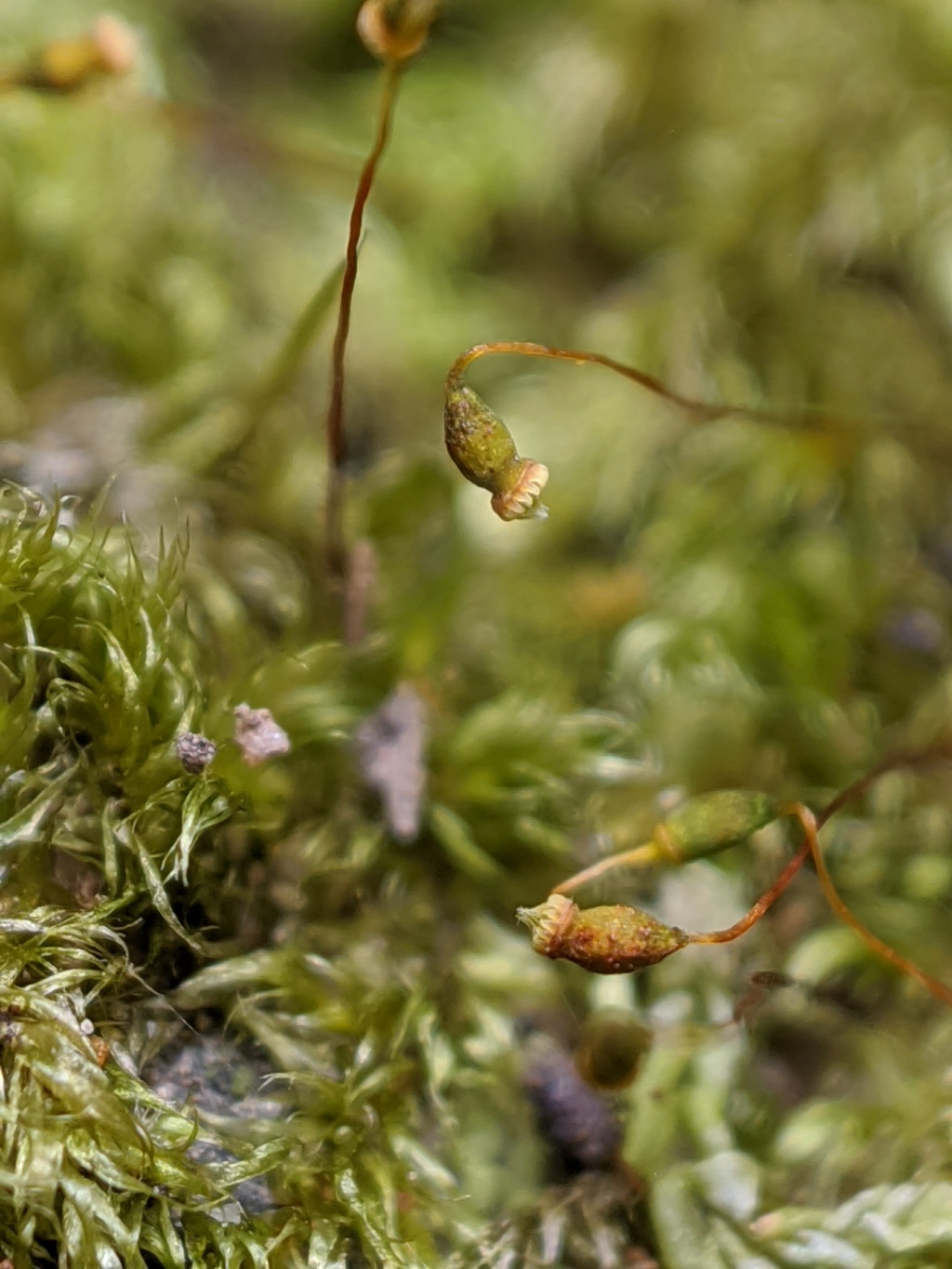Rhaphidorrhynchium
Autoicous or rarely dioicous (not in Victoria). Asexual propagules absent. Mats or tufts on logs, rocks and tree trunks and branches. Stems creeping, irregularly to pinnately branched, with fascicles of rhizoids; pseudoparaphyllia foliose. Stem and branch leaves similar, ovate-lanceolate or lanceolate, falcate-secund when moist or dry, not ranked; apex acuminate or piliferous; costa absent; margins entire or minutely denticulate near apex, plane, without a border; laminal cells linear, including in acumen, smooth or obscurely unipapillose; alar cells clearly differentiated, with a basal row of inflated and hyaline or pigmented cells, surrounded by a few subquadrate or oblong cells. Capsules inclined to pendent, symmetric, ovoid to cylindric, without an annulus, with a smooth neck. Calyptra cucullate, smooth, glabrous. Operculum rostrate. Peristome double; endostome segments similar length as exostome teeth, with a high basal membrane; cilia present.
Around 60 species shared between South America, Africa, India and East Asia through to Australasia; one species in Victoria.
Rhaphidorrhynchium is often not recognised (e.g. Goffinet & Buck 2004), instead being included in Sematophyllum (e.g. Scott & Stone 1976; Buck & Tan 1989). In an Australian treatment of Sematophyllaceae, Ramsay et al. (2004) recognised Rhapiddorhynchium because they found that it could be distinguished in Australia from Sematophyllum based on its strongly falcate-secund leaves and linear cells in the acumen and they suspected that Rhaphidorrhynchium may be closer related to Warburgiella due to both genera having laminal cells that can be unipapillose. This suspicion has been recently confirmed in phylogenies based on DNA sequences from all genomic compartments, with Warburgiella being resolved as the closest relative of Rhaphidorrhynchium (Carvalho-Silva et al. 2017; Han & Jia 2020).
 Spinning
SpinningBuck, W.R.; Tan, B.C. (1989). The Asiatic genera of Sematophyllaceae associated with Trichosteleum. Acta Bryolichenologica Asiatica 1: 5–19.
Carvalho-Silva, M.; Stech, M.; Soares-Silva, L.H.; Buck, W.R.; Wickett, N.J.; Liu, Y.; Câmara, P.E.A.S. (2017). A molecular phylogeny of the Sematophyllaceae s.l. (Hypnales) based on plastid, mitochondrial and nuclear markers, and its taxonomic implications. Taxon 66: 811–831.
Goffinet, B.; Buck, W. R. (2004). Systematics of the Bryophyta (Mosses): from Molecules to a Revised Classification. Monographs in Systematic Botany from the Missouri Botanical Garden 98: 205–239.
Han, W.; Jia, Y. (2020). Phylogeny and classification of the Sematophyllaceae s.l. (Hypnales, Bryophyta). *Journal of Systematics and Evolution * 59: 524–540.
Ramsay, H.P.; Schofield, W.B.; Tan, B.C. (2004). The family Sematophyllaceae (Bryopsida) in Australia, Part 2. Acroporium, Clastobryum, Macrohymenium, Meiotheciella, Meiothecium, Papillidiopsis, Radulina, Rhaphidorrhynchium, Trichosteleum, and Warburgiella. Journal of the Hattori Botanical Laboratory 95: 1–69.
Scott, G.A.M.; Stone, I.G. (1976). The mosses of Southern Australia. Academic Press, London, New York, San Francisco.



